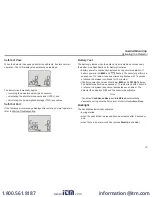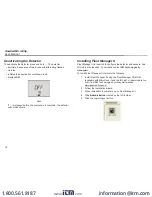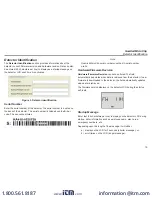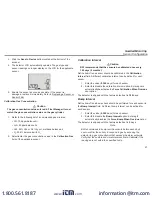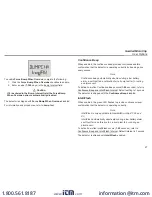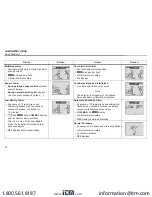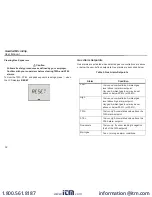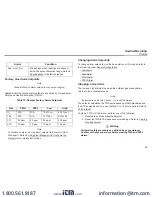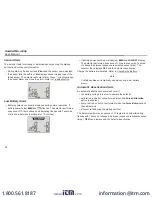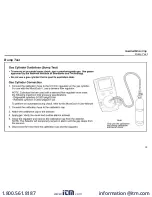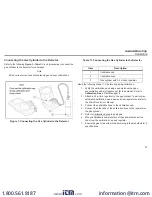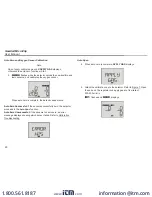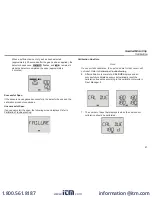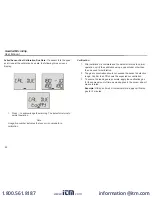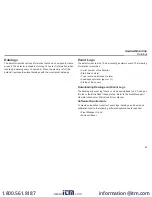
GasAlertMicroClip
Alarms
Alarms
7DEOHGHVFULEHVWKHGHWHFWRUDODUPVDQGFRUUHVSRQGLQJVFUHHQV
'XULQJDQDODUPFRQGLWLRQWKHGHWHFWRUDFWLYDWHVWKHEDFNOLJKWDXGLEOH
YLVXDOYLEUDWRUDODUPVDQGGLVSOD\VWKHFXUUHQWDPELHQWUHDGLQJV,I
PRUHWKDQRQHW\SHRUOHYHORIDODUPRFFXUVVLPXOWDQHRXVO\DPXOWLJDV
DODUPUHVXOWV,I6WHDOWKLVHQDEOHGWKHDXGLEOHDQGYLVXDODODUPVDUH
GLVDEOHGDQGRQO\WKHYLEUDWRUDODUPDFWLYDWHV
7RFKDQJHWKHIDFWRU\GHILQHGDODUPVHWSRLQWVUHIHUWR/RZ$ODUP+LJK
$ODUP7:$$ODUPDQG67(/$ODUP
7DEOH$ODUPV
Note
If
/RZ$ODUP$FNQRZOHGJH
is enabled, the audible alarm can
be disabled during a low alarm condition. The vibrator and visual
alarm indicators remain active until the alarm condition changes
or the detector deactivates. Press
C
to acknowledge the low
alarm and deactivate the audible alarm. If the alarm escalates to
a high, TWA, or STEL alarm, the audible alarm reactivates.
If enabled,
/DWFKHG$ODUPV
causes the low and high gas alarms
(audible, visual, and vibrator) to persist until the alarm is
acknowledged (by pressing
C
) and the gas concentration is
below the low alarm setpoint. The LCD displays the peak
concentration and the audible, visual, and vibrator indicators
persist until the alarm condition no longer exists. Enable/disable
/DWFKLQJ$ODUPV
in Fleet Manager II. Local regulations may
require
/DWFKLQJ$ODUPV
be enabled.
$ODUP
6FUHHQ
$ODUP
6FUHHQ
/RZ$ODUP
6ORZVLUHQ
6ORZDOWHUQDWLQJIODVK
L
DQGJDVEDUIODVK
9LEUDWRUDODUPDFWLYDWHV
7:$$ODUP
6ORZVLUHQ
6ORZDOWHUQDWLQJIODVK
L
DQGJDVEDUIODVK
9LEUDWRUDODUPDFWLYDWHV
+LJK$ODUP
)DVWVLUHQ
)DVWDOWHUQDWLQJIODVK
L
DQGJDVEDUIODVK
9LEUDWRUDODUPDFWLYDWHV
67(/$ODUP
)DVWVLUHQ
)DVWDOWHUQDWLQJIODVK
L
DQGJDVEDUIODVK
9LEUDWRUDODUPDFWLYDWHV
www.
.com
1.800.561.8187

